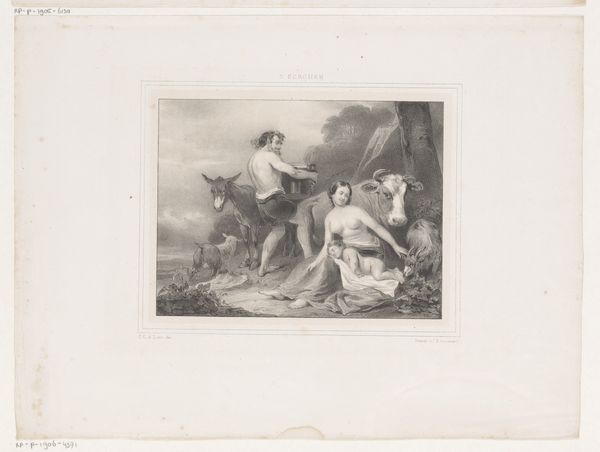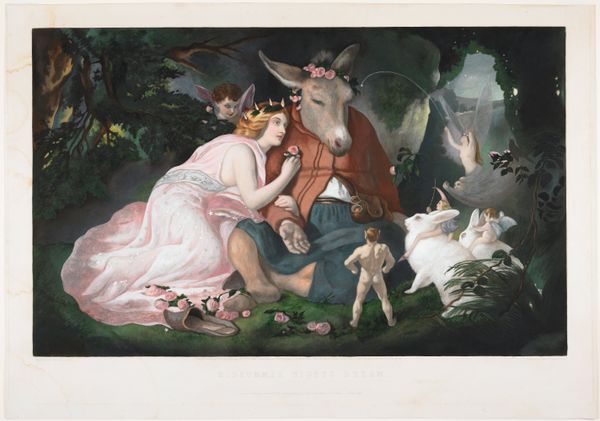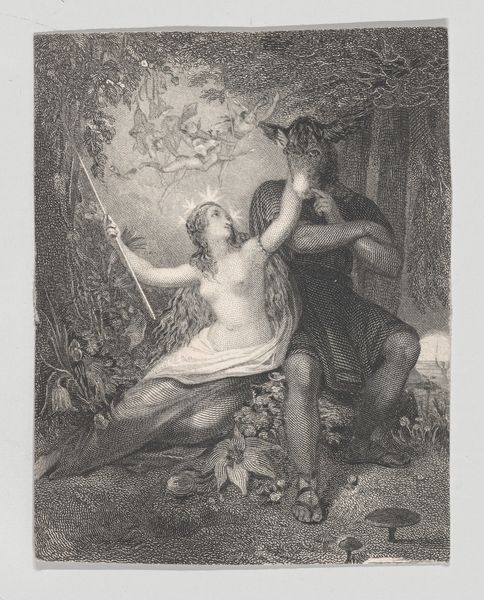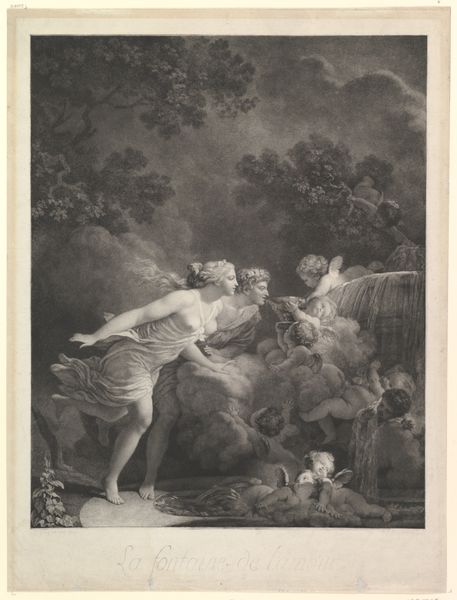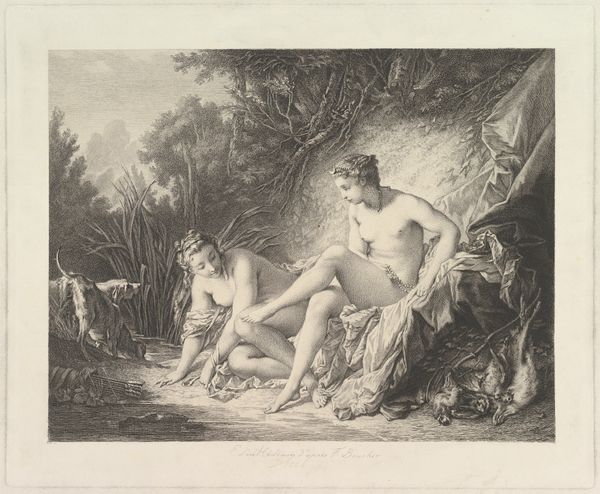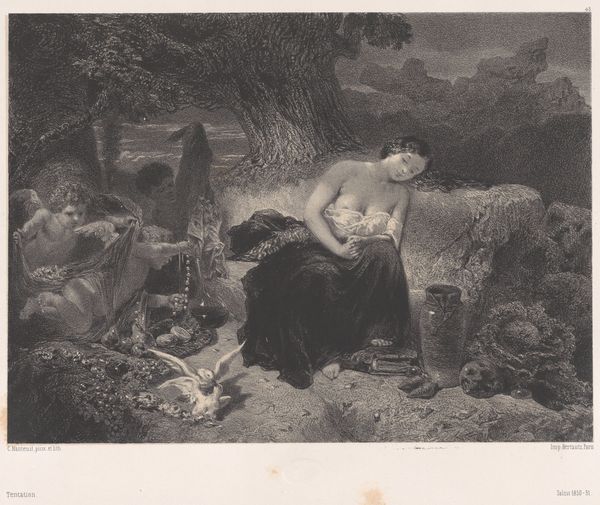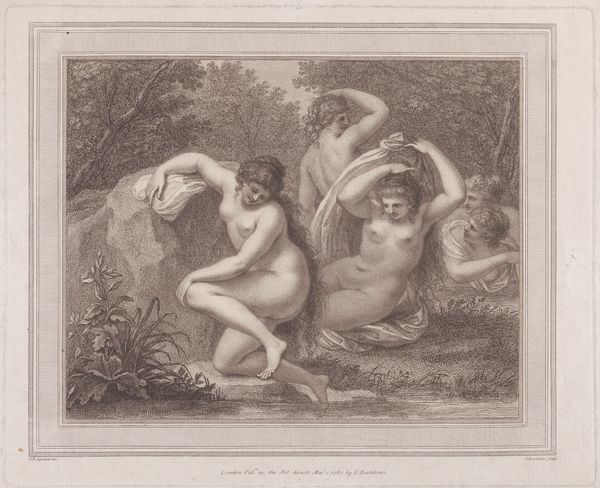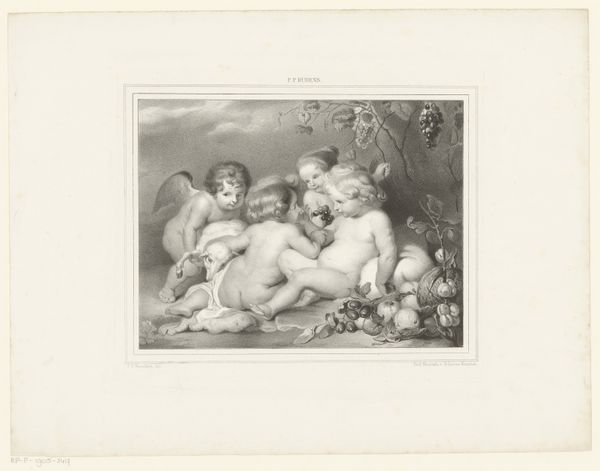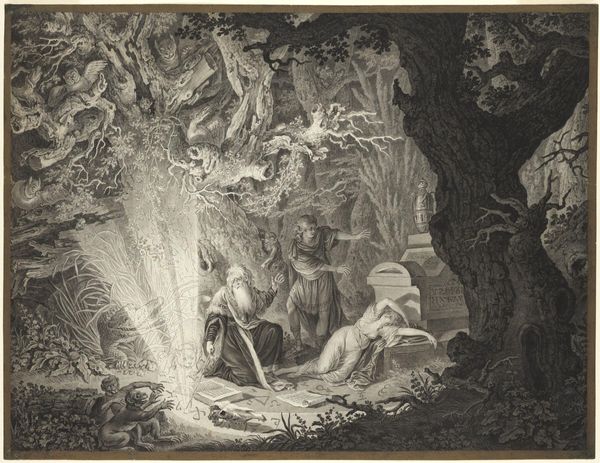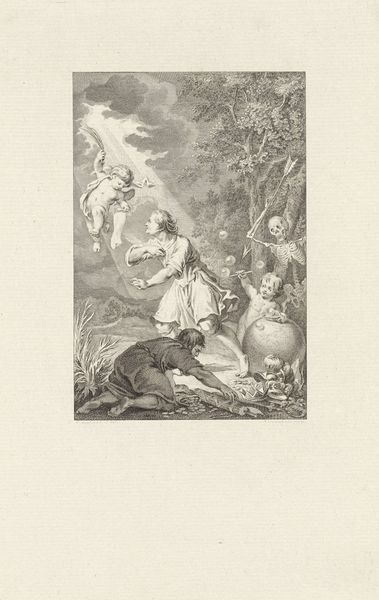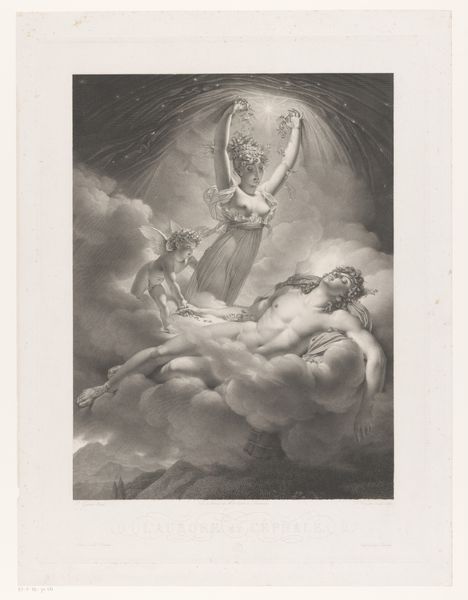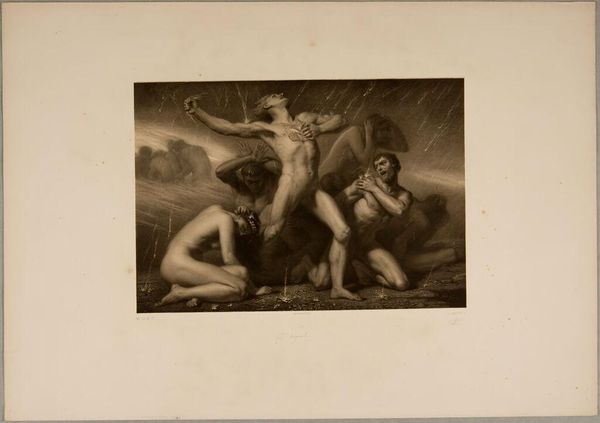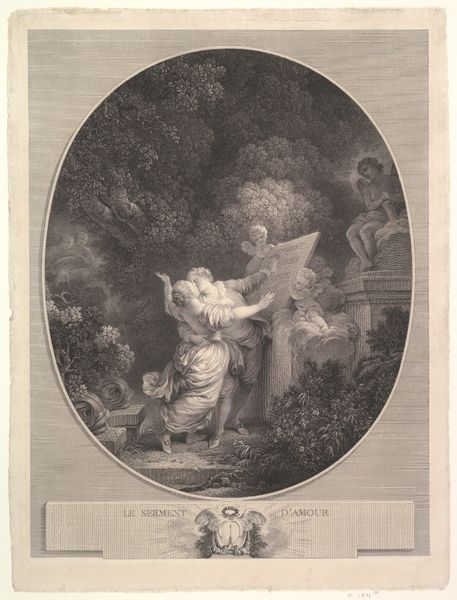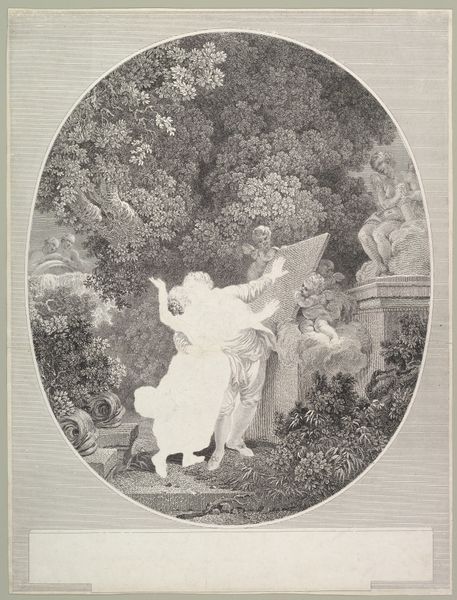
A Midsummer Night's Dream (Shakespeare, Act 4, Scene 1) 1857
0:00
0:00
Dimensions: Plate: 25 11/16 × 37 5/16 in. (65.2 × 94.7 cm) Sheet: 28 7/16 × 38 7/16 in. (72.2 × 97.7 cm)
Copyright: Public Domain
This print after Edwin Landseer's painting depicts a scene from Shakespeare's "A Midsummer Night's Dream." It captures the moment when Titania, the queen of the fairies, is enamored with Bottom, a weaver who has been magically transformed into a donkey. Made in 19th century Britain, Landseer's artwork reflects the Victorian era's fascination with Shakespeare and the romanticizing of literature. It also showcases a specific institutional trend; the rise of reproductive printmaking. This allowed popular paintings to reach a wider audience. But consider the politics of this imagery. The portrayal of Titania, a powerful female figure, doting on a half-human, half-animal creature hints at anxieties about social order and sexuality. The tiny fairies, a naked Puck, and Bottom's coarse, working-class attire further complicate the image's social commentary. To truly understand this artwork, we need to delve into the Victorian era's social and cultural landscape. Art historical research, including studying period literature and audience reception, can shed light on the complex meanings embedded within this seemingly innocent scene.
Comments
No comments
Be the first to comment and join the conversation on the ultimate creative platform.
